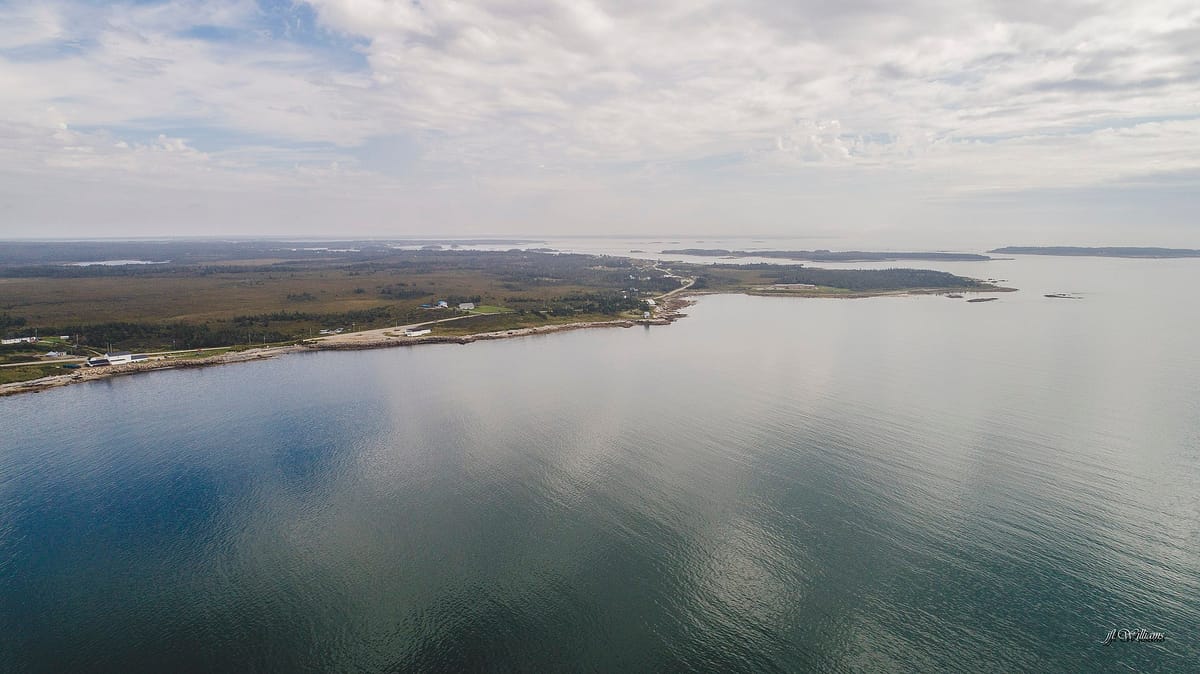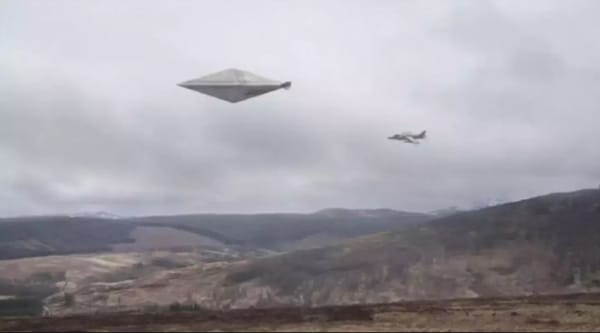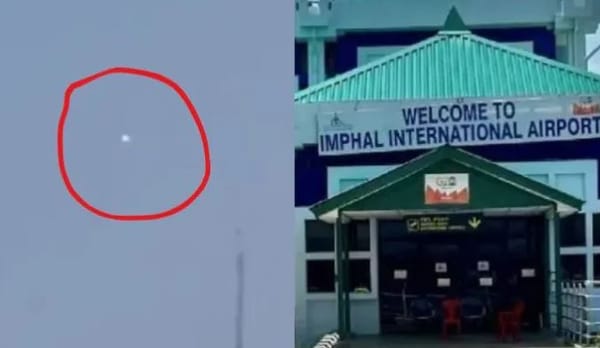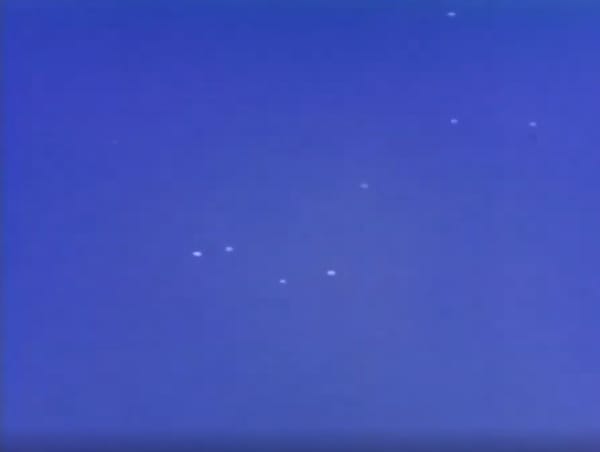The 1967 Shag Harbor Incident

The Shag Harbor Incident refers to an unexplained aerial event that occurred on the evening of October 4, 1967, near the small community of Shag Harbor in Nova Scotia, Canada. This event involved multiple witnesses who reported observing a large, luminous object that appeared to crash into the waters of Shag Harbor. The sighting prompted an immediate response from local authorities and the Canadian military, who conducted an investigation into the reported incident. Despite the extensive inquiry, no conclusive explanation was determined, leaving the Shag Harbor Incident as one of the more intriguing unexplained events in Canadian UFO history.
The Incident
On the evening of October 4, 1967, a series of sightings and reports preceded the Shag Harbour Incident. At approximately 7:15 PM, Air Canada Flight 305, en route from Halifax to Toronto, was in the airspace over Sherbrooke and Saint-Jean, Quebec. First Officer Robert Ralph drew Captain Pierre Charbonneau’s attention to an unusual object visible through the aircraft’s left window. The captain described the object as a brilliantly lit, rectangular formation with smaller lights trailing behind it. Shortly thereafter, at around 7:19 PM, the pilots observed a sizable explosion near the object, followed by a second explosion a few minutes later, which dissipated into a blue cloud around the object.
In Mahone Bay, Nova Scotia, Darrel Dorey and his family witnessed a large object maneuvering in the sky. Dorey was so intrigued by the sighting that he later wrote to the RCAF Greenwood Base Commander, seeking clarification about what they had observed.
Meanwhile, Captain Leo Howard Mersey, aboard the MV Nickerson, a vessel operating out of Sambro, Nova Scotia, detected four stationary blips on his radar. Observing from the wheelhouse, Mersey and his crew saw these objects arranged in a rectangular formation in the northeastern sky. Concerned, Mersey contacted the Halifax Rescue Coordination Centre and the harbour master, and later filed a report with the Lunenburg RCMP.
Initial Events
The Shag Harbour Incident itself occurred around 11:20 PM Atlantic Daylight Time on October 4, 1967. Local resident Laurie Wickens, along with four friends, reported seeing a large object descending into the waters off Shag Harbour. They described observing the object as it floated about 250 to 300 meters from the shore. Wickens reported the sighting to the RCMP detachment in Barrington Passage, indicating that he had seen what appeared to be an aircraft crash into the water.
Witnesses described hearing a whistling noise followed by a "whoosh" and then a loud bang as the object hit the water. The object was described as having lights and remained visible for a short period before disappearing beneath the surface.
Search and Rescue Efforts
Given the initial assumption that an aircraft had crashed, the RCMP dispatched two officers to the scene within 15 minutes. They contacted the Halifax Rescue Coordination Centre (RCC) to report the incident and check for any missing aircraft. Despite the initial urgency, the object, which was still emitting lights, began to sink before any rescue attempts could be made.
Local fishing boats, mobilized quickly, scoured the waters off Shag Harbour for survivors or debris. A Canadian Coast Guard cutter arrived about an hour after the incident, but no wreckage or bodies were found. By the next morning, RCC Halifax confirmed that no aircraft were reported missing. All commercial, private, and military aircraft were accounted for in the region.
RCC Halifax then sent a priority telex to the Air Desk at Air Force headquarters in Ottawa, indicating that all conventional explanations had been exhausted and classifying the report as a UFO sighting. The Air Desk subsequently recommended that the navy conduct an underwater search.
Fleet Diving Unit Atlantic, comprising navy divers, arrived two days after the incident. They conducted a thorough search of the seafloor in the Gulf of Maine near Shag Harbour for three days, but no trace of the object was found.
Documentation and Press Coverage
The Department of National Defence has preserved a summary of the incident in their files, which are available at the National Library and Archives. The incident received considerable media attention, with extensive coverage in the Halifax Chronicle-Herald. The newspaper’s front-page articles on October 7 and 9, 1967, detailed witness accounts, the search and rescue efforts, and the eventual cessation of the search. The reports highlighted the extensive efforts by the Canadian military and the lack of any conclusive findings, adding to the intrigue surrounding the event.
Overall, while the Shag Harbour Incident remains officially unexplained, the thorough investigations conducted by Canadian and American agencies underscore the seriousness with which the event was taken.
Aftermath
Investigations and Official Reports
Following the Shag Harbour Incident, the Canadian government conducted a multi-agency investigation involving several departments. Initially, the Royal Canadian Mounted Police (RCMP) and the Canadian Coast Guard were involved in the immediate response and search efforts. When it became clear that no conventional aircraft was missing and no physical evidence was recovered, the investigation was handed over to the Canadian Forces and other relevant authorities.
The Rescue Coordination Centre (RCC) in Halifax played a key role, quickly contacting military and civilian air traffic control to confirm the status of all flights in the region. The RCC's initial findings ruled out the possibility of a missing aircraft. Subsequently, the Canadian Air Force’s Air Desk was notified, which then recommended a detailed underwater search.
The Fleet Diving Unit Atlantic, a team of navy divers, conducted a search of the seafloor in the Gulf of Maine. Over three days, divers examined the area where the object was reported to have sunk. Despite their extensive efforts, no trace of the object, debris, or any other physical evidence was found.
U.S. Involvement and the Condon Committee
The Shag Harbour Incident also attracted the attention of American authorities. The U.S. Condon Committee, part of the University of Colorado's UFO Project, was tasked with investigating UFO reports. Although the Committee was primarily focused on American sightings, the Shag Harbour case was included due to its proximity and the involvement of U.S. radar operators and military personnel. The Condon Committee’s involvement primarily revolved around assessing the credibility of the sightings and the search efforts but did not uncover additional information beyond that which was reported by Canadian agencies.
Speculations and Cover-Up Theories
Despite the thorough investigations, the lack of concrete evidence led to various speculations and theories regarding the nature of the incident. Some suggested that the object might have been a secret military craft, possibly from either the U.S. or Canadian military, which could explain the lack of official explanation. Others speculated that the object might have been an extraterrestrial craft, a theory fueled by the initial classification of the event as a UFO sighting.
The absence of debris and the cessation of the search led to claims of a possible cover-up. Critics argue that the lack of findings and the swift conclusion that no aircraft was missing could indicate that the true nature of the incident was intentionally withheld from the public. Such theories are supported by the fact that military and government agencies sometimes classify sensitive information, leading to public suspicions of deliberate suppression.
However, most official statements and investigations pointed to natural or conventional explanations, such as the possibility of a meteorological balloon, a flare, or an unconventional aircraft, though no definitive evidence was presented. The Canadian government’s official stance remained that the Shag Harbour Incident was a UFO sighting, with no further details provided once the search was concluded.
Conclusion
The Shag Harbour Incident of October 4, 1967, stands as one of Canada’s most intriguing and enduring UFO cases. Despite extensive investigations by Canadian and American authorities, including search and rescue operations and a review by the U.S. Condon Committee, the event remains officially unresolved.
Witnesses, including local residents, fishermen, and airline crew, reported seeing a large, illuminated object crashing into the waters near Shag Harbour. Subsequent searches by the RCMP, the Canadian Coast Guard, and navy divers failed to locate any debris or confirm the nature of the object, while air traffic records indicated no missing aircraft.
The lack of concrete evidence has fueled various theories and speculations, ranging from secret military tests to extraterrestrial involvement. Official reports have consistently classified the event as a UFO sighting, but have not provided definitive explanations.
The Shag Harbour Incident continues to capture public imagination and interest due to the combination of credible witness testimonies, the involvement of multiple investigative agencies, and the mystery surrounding the unidentified object. While it remains a notable case in UFO lore, it also serves as a reminder of the complexities and challenges faced in investigating unexplained phenomena. The case highlights the difficulties in finding conclusive answers and the propensity for such incidents to leave lingering questions and theories long after the official investigations have concluded.



